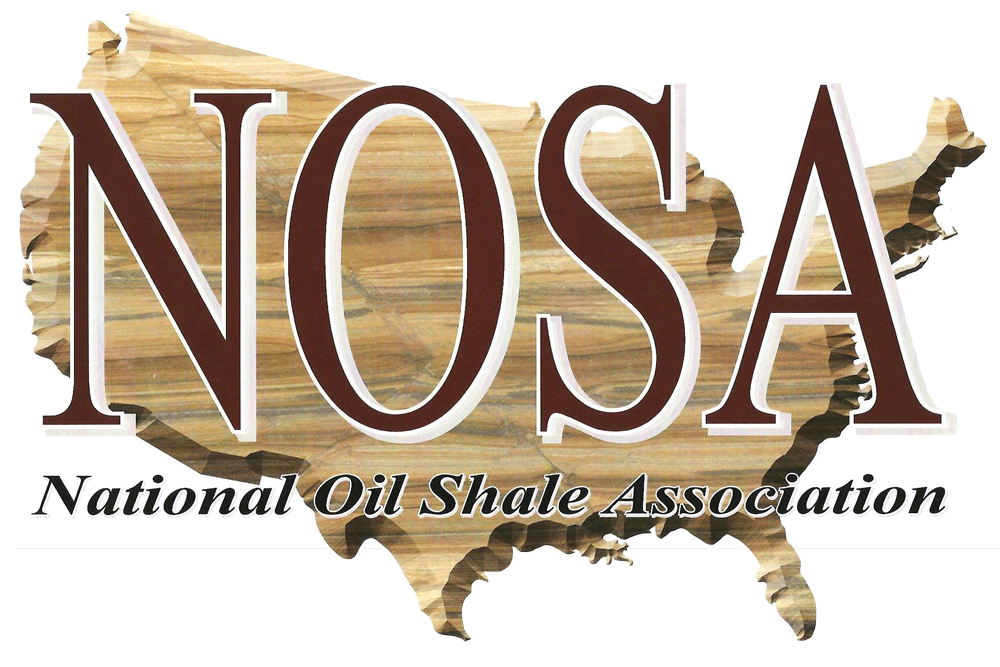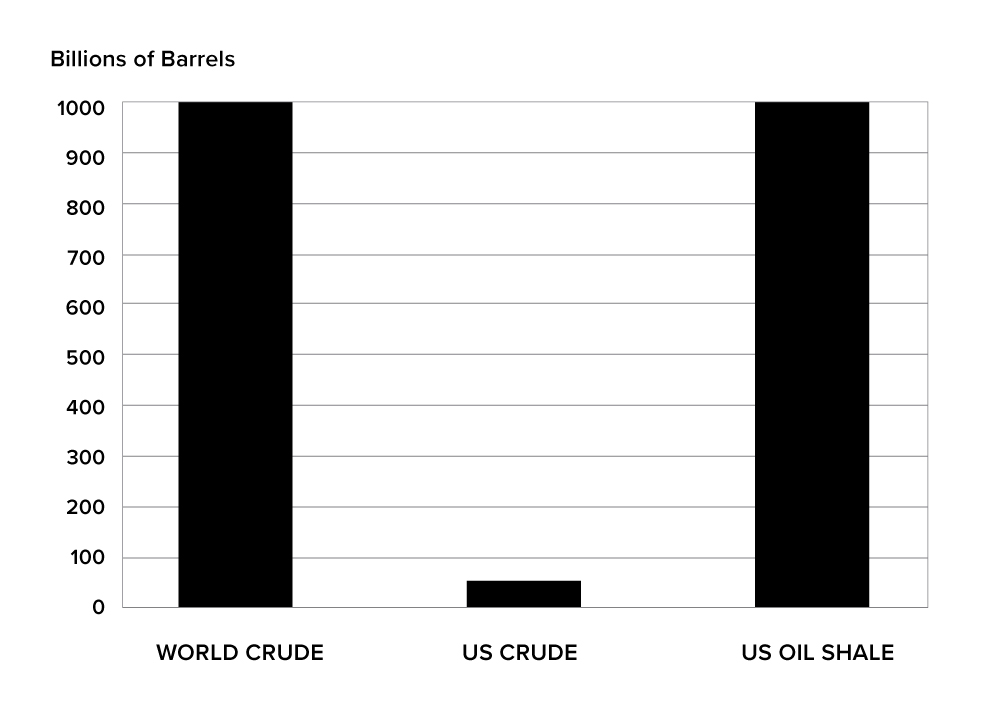Shale
Resource
The USA has by far the world’s largest and richest deposits of kerogen-bearing rock formations, known as oil shale deposits.

The USA has by far the world’s largest and richest deposits of kerogen-bearing rock formations, known as oil shale deposits.

If we consider that the USA produces and consumes about 20 million barrels of oil per day, 1.0 trillion barrels would meet the nation’s needs, at the current rate of consumption, for nearly 137 years. The known world conventional oil reserves are something like 1.7 trillion barrels and the USA’s conventional reserves are about 47 billion barrels. This chart demonstrates the comparison of the U.S. oil shale resource to the world proven reserves of conventional oil.
When the rock is retorted it will yield a certain amount of oil, typically measured in gallons per ton of rock. A laboratory procedure, simulating the retort, can provide a good measurement of how much oil a rock unit will produce. Most domestic oil shale projects focus on a vertical section of the rock formations which, when mined and retorted, will produce a minimum of 25 gallons of oil per ton of rock. Since a barrel of oil is 42 gallons, we can say that this 25-gallon rock yields 25/42 or about 0.6 barrels per ton. In the United States the U.S. Geological Survey has estimated that there may be 800 billion barrels of oil available that would come from rocks that assay over 25 gallons/ton. Interestingly, there are some attractive oil shale horizons that average over 60 gallons/ton.
Although oil shale deposits occur in many of the eastern states, the richest deposits are found in Green River Formation of Colorado, Utah, and Wyoming. These western areas have received most of the attention over the past 100 years and will most likely be where commercial projects occur in the future.
The location and richness of the nation’s oil shale deposits are well known. No risky, expensive exploration is required, which is not the case with conventional oil and gas. An oil shale operation will involve high up-front capital investment to build the plant, but once in operation, the project will continue to operate at the same location for well over 25 years on average.